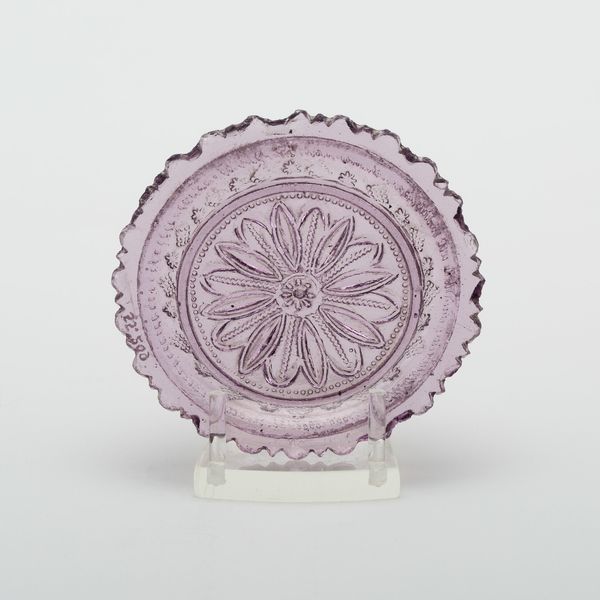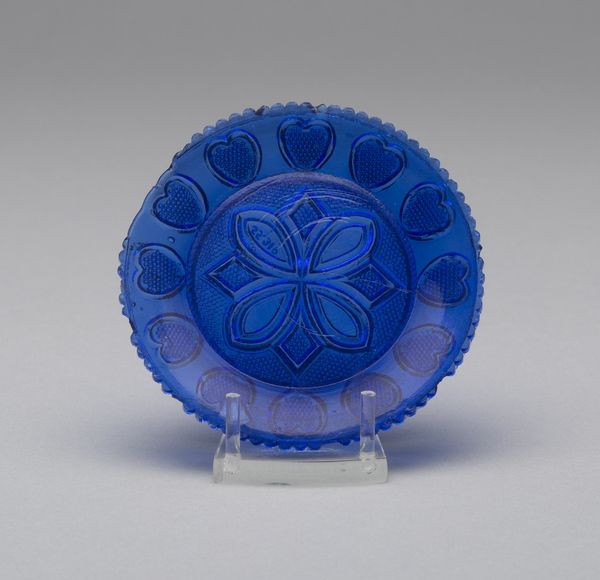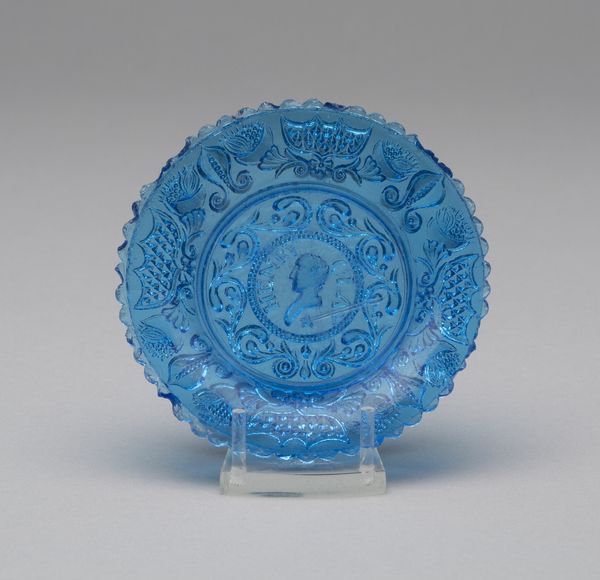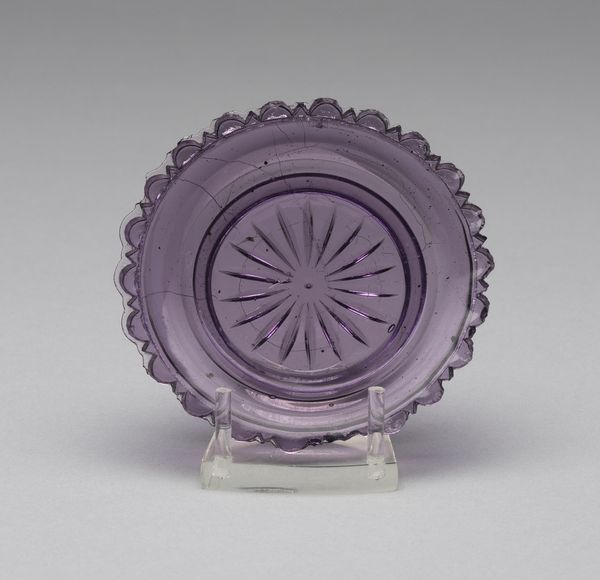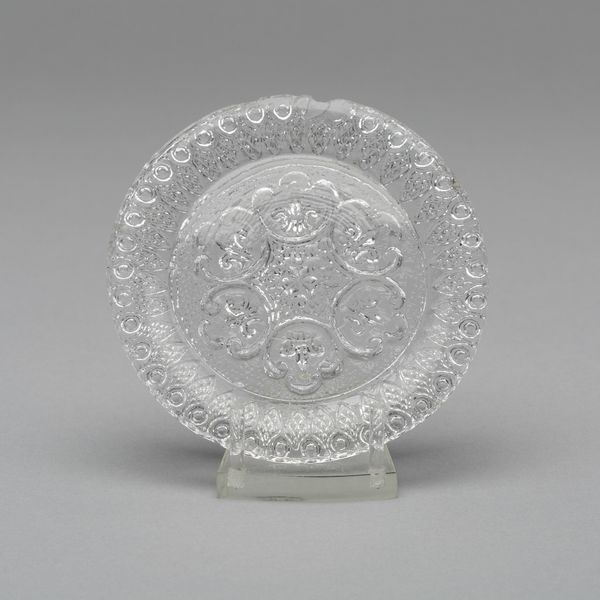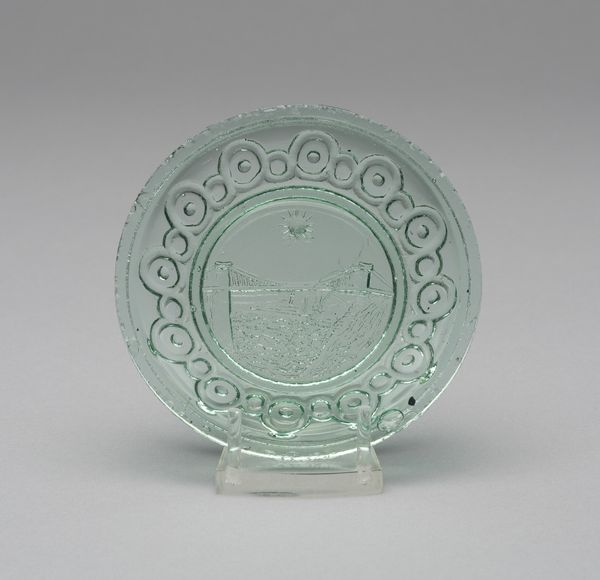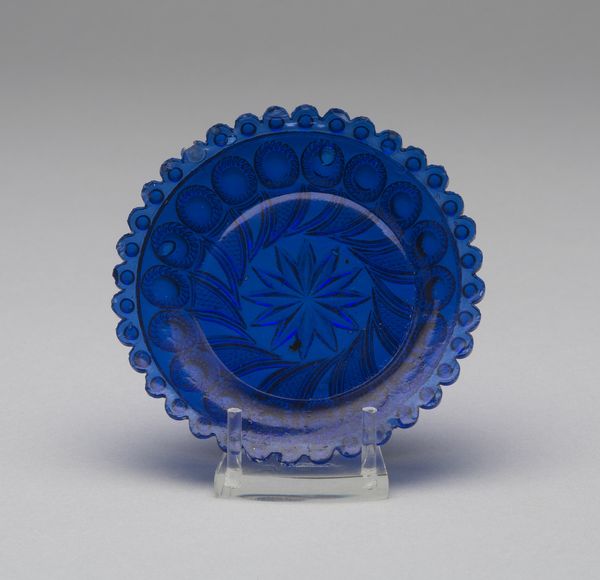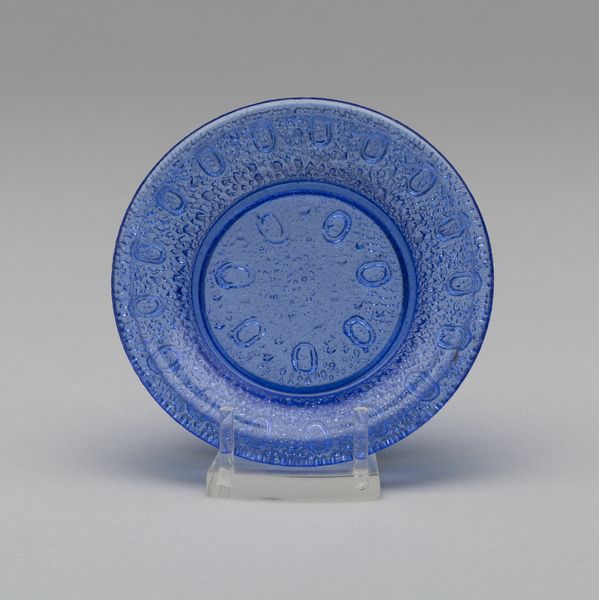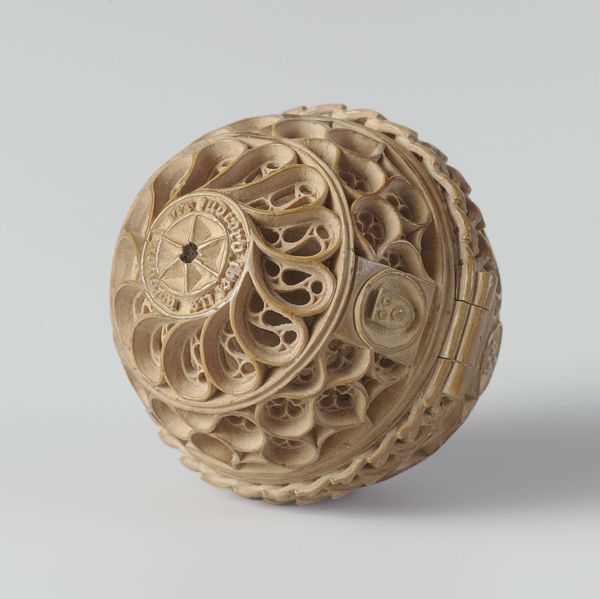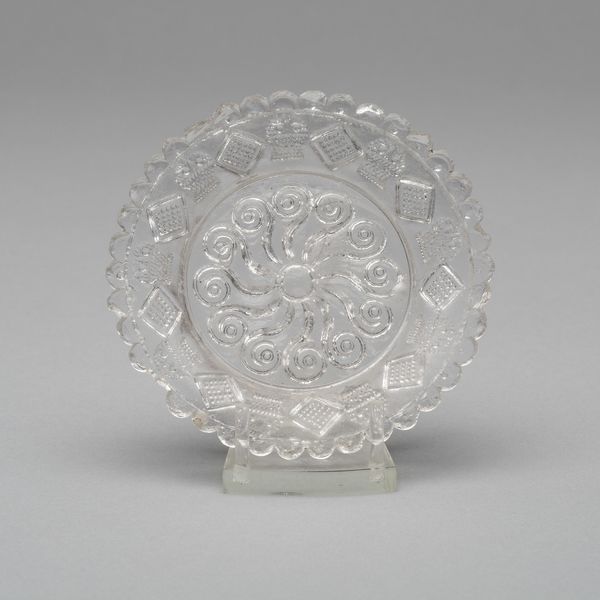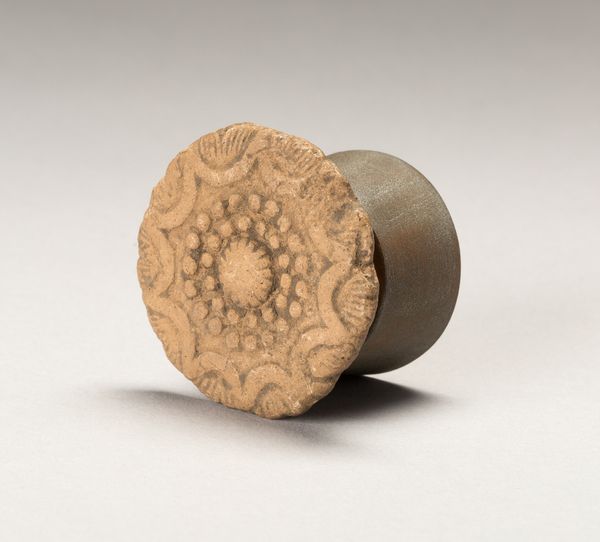
ceramic, glass
#
ceramic
#
glass
#
ceramic
#
decorative-art
Dimensions: diam. 7.6 cm (3 in.)
Copyright: Public Domain
Editor: Here we have an antique cup plate, made of ceramic or glass sometime between 1800 and 1850, by an anonymous artist. It's a beautiful mauve colour with an intricate floral design. I'm immediately struck by the delicate craftsmanship, yet it seems such a utilitarian object. How would you interpret the role of an object like this in its historical context? Curator: It's important to remember that even everyday objects carry cultural weight. Cup plates like these became popular during a period of changing social etiquette surrounding tea and coffee drinking. Think about it: improvements in ceramic and glass production meant affordable wares became accessible to a wider public. The democratization of "refined" social practices, like tea parties, created a demand for accessories such as this plate. Editor: So, it’s not just a plate, it’s a symbol? Curator: Precisely! Its decorative floral motif speaks to emerging notions of domesticity and taste among the middle classes. Consider who could afford such items, who was being excluded from such social rituals? Mass production shaped consumption patterns, and access to beautiful things influenced class dynamics. How do you think a modern observer might perceive such an object, knowing its history? Editor: That's a good point. Now I see it as more than just decorative. It's a piece of social history, reflecting class, accessibility, and changing cultural norms. Curator: Indeed. What we perceive as simple design choices were, in their time, potent markers of social identity. It shows how historical forces influenced our current consumer society. Editor: Thanks for shedding some light, it gives a deeper understanding into how the history of objects is connected to our modern lives.
Comments
No comments
Be the first to comment and join the conversation on the ultimate creative platform.
